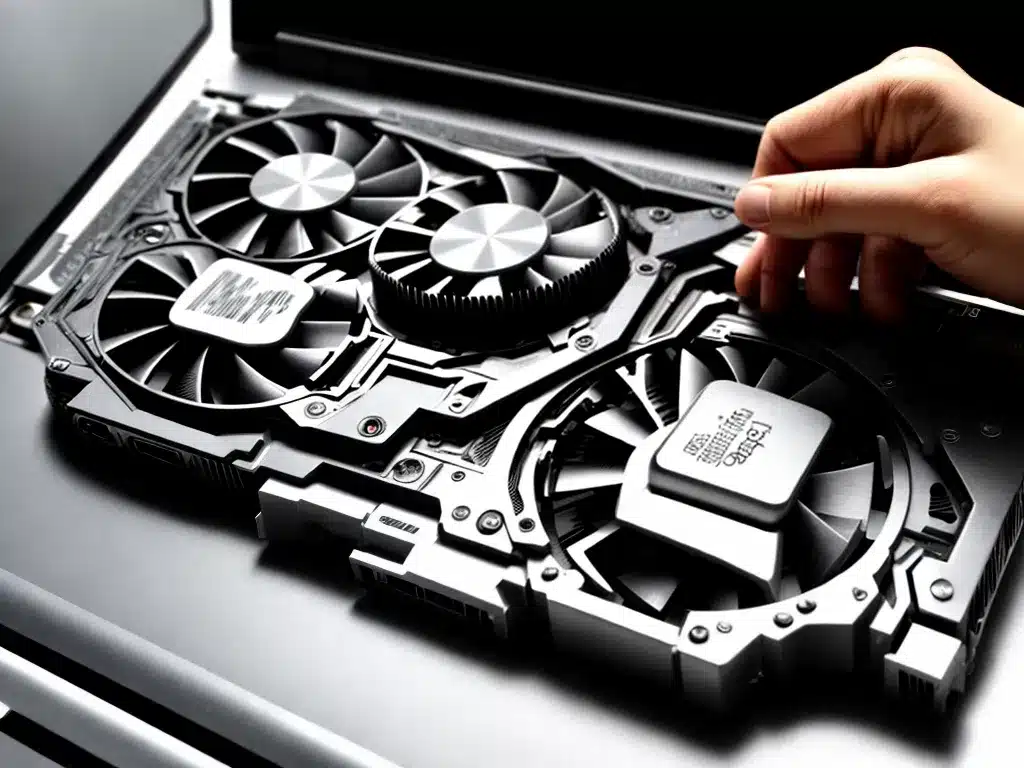
Upgrading a laptop’s graphics card can be a great way to improve gaming performance and enable your laptop to run newer games that require more graphics capability. However, there are some important factors to consider before attempting to upgrade a laptop GPU.
Hardware Compatibility
The first consideration is hardware compatibility. Most laptops are not designed to have their GPUs upgraded. Graphics cards for laptops are often specially designed to fit the exact hardware configuration of a particular model.
This means you can’t simply buy a new graphics card and install it in your laptop. The card needs to be physically compatible with the motherboard, cooling system, and power supply of your specific laptop model.
Some high-end gaming laptops are designed to be upgraded. For example, certain Alienware and MSI gaming laptops allow users to upgrade the GPU. But for most standard consumer laptops, GPU upgrades are not possible.
Before considering a GPU upgrade, research whether your specific laptop model supports graphics card upgrades. Contact the laptop manufacturer directly to verify compatibility.
Physical Size Constraints
The physical size of laptop graphics cards is another limiting factor. Laptop GPUs are much smaller than desktop graphics cards in order to fit inside the tighter spaces of a laptop chassis.
Even gaming laptops that allow GPU upgrades have strict size limitations for the graphics card. A standard desktop GPU simply won’t physically fit. You need a special mobile or MXM version designed for laptops.
Measure the physical space available inside your laptop to determine the maximum dimensions for a new card. Compare those measurements against mobile GPU specs when shopping for a compatible replacement.
BIOS and Driver Support
The laptop’s BIOS and drivers must properly recognize a new GPU for the upgrade to work. Most standard laptop BIOSes don’t support swapping out the main graphics card. You’ll need a gaming laptop with a custom BIOS designed specifically for GPU upgrades.
Additionally, current GPU drivers for your laptop are tailored for the existing graphics card. Installing a new Nvidia or AMD graphics card may require updated driver packages specifically customized for the new card. Lack of proper driver support can prevent the new GPU from functioning correctly.
Check with your laptop manufacturer regarding BIOS and driver-level compatibility before acquiring a new graphics card. Flashing the BIOS or installing unofficial driver hacks has risks.
Power and Thermal Limits
Graphics cards require substantial power to operate. Most standard laptops simply don’t provide enough extra power headroom to run a faster GPU, even if the card physically fits.
Gaming laptops that allow GPU upgrades are specifically engineered with PSUs and cooling systems capable of running high-end mobile GPUs. Don’t expect to put a 100W graphics card in a laptop designed for integrated graphics.
Carefully check the power requirements of potential replacement cards against your laptop’s power capabilities. Also factor in the laptop’s cooling capacity. More powerful GPUs produce more heat.
Cost Considerations
Upgrading a laptop’s GPU is expensive. Gaming-oriented mobile GPUs are costly on their own. Additional costs may include a new heatsink, thermal pads, and higher-wattage power adapter. You’ll also need to factor in labor costs if you can’t do the installation yourself.
At a certain point, you may end up spending more on a GPU upgrade than if you had just bought a new higher-spec laptop. Weigh the costs against how long you plan to keep your current laptop before deciding.
For most laptop owners, a GPU upgrade is not feasible due to the complexity and costs involved. But it can be a worthwhile investment if you have a high-end gaming laptop specifically designed to have its graphics card replaced. Carefully research compatibility and requirements to determine if a laptop GPU upgrade makes sense for your situation.












